
What’s scarier for Canadian communities — floods, or flood maps?
When maps showing areas most likely to flood are outdated, it puts people and property...
There are more than a trillion litres of toxic oilsands waste stored in tailings ponds near Alberta’s Athabasca River — and they’re leaking.
Yes, we now have “scientifically valid evidence” that the ponds meant to contain toxic fluids are leaking, according to a years-long probe backed by the governments of Canada, the U.S. and Mexico.
Not only that, the Commission for Environmental Cooperation report noted there is evidence tailings fluids “may circumvent [containment] systems and contaminate aquifers” and end up in the groundwater.
“It really affirmed what my community has been saying for quite a long time,” Melody Lepine, director of government and industry relations for the Mikisew Cree First Nation, told The Narwhal.
Lepine, who lives in Fort McMurray, Alta., still has a lot of questions.
“It’s making its way to the groundwater, so is it making its way to our surface water? Is it making its way to the foods and wildlife that we rely on for subsistence purposes, our traditional foods? Are we consuming it?”
The answers to these questions are largely unknown, which is a big part of the problem.
In a statement emailed to The Narwhal, Minister of Environment and Climate Change Canada Jonathan Wilkinson said “enough is enough.”
“Oilsands tailings must be addressed,” he added. “We will ensure enforcement officers will be given the tools they need to ensure polluters are held to account when environmental laws are broken.”
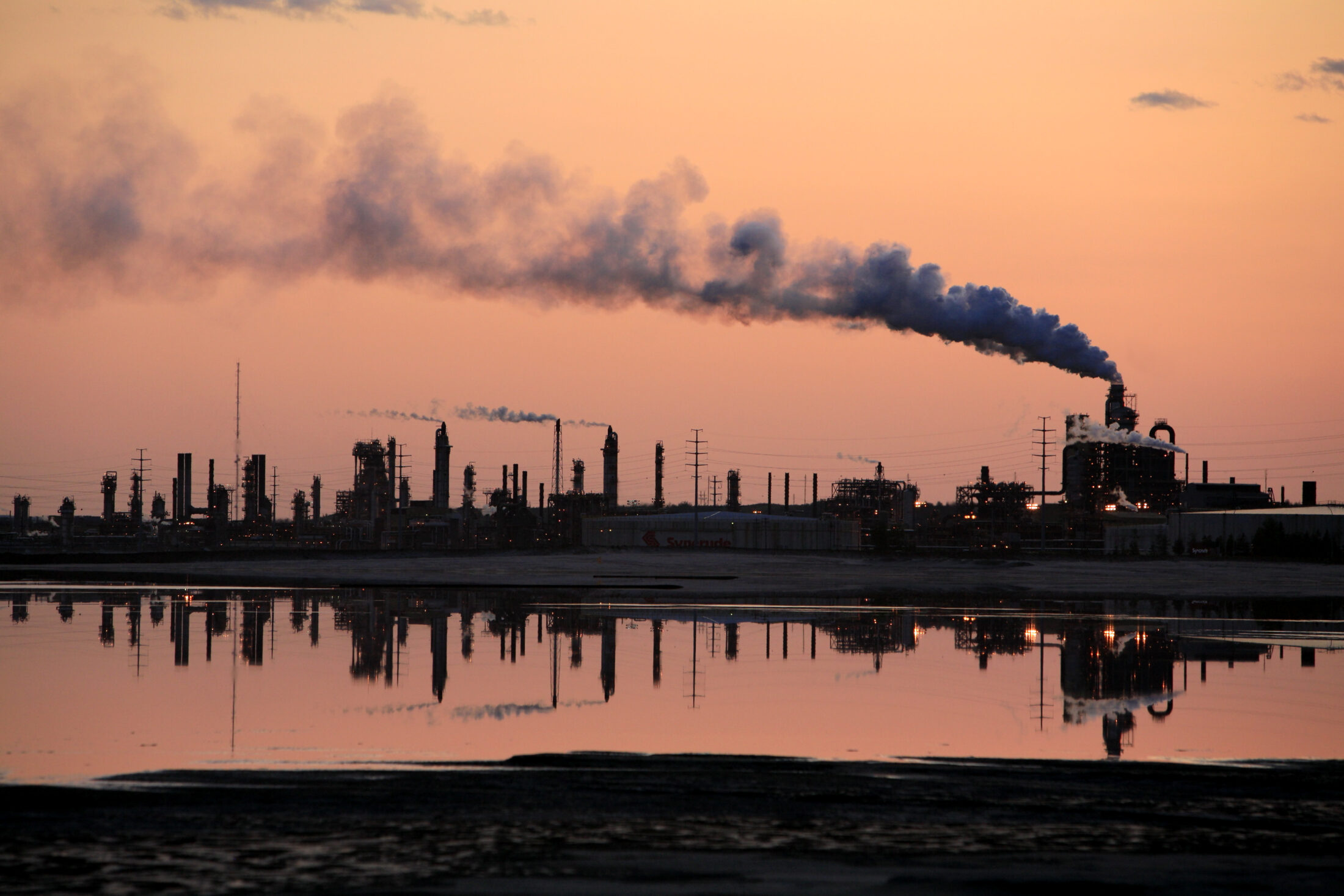
A Syncrude upgrader plant, north of Fort McMurray, Alta., is reflected in a tailings pond. According to a report from the Commission for Environmental Cooperation, there is “consistent evidence of seepage of [fluid] from tailings ponds into groundwater.” Photo: Jiri Rezac / Greenpeace
He noted an additional $46 million in funding has been allocated to the federal environmental enforcement agency. But the federal government has so far been reluctant to punish oilsands companies for leaking tailings ponds.
And despite years of uncertainty, the federal government still hasn’t created regulations for the release of tailings fluids into waterways.
“We are in 2020 and it still seems like this is a problem we haven’t quite cracked the nut on,” Nina Lothian, responsible fossil fuel program director at the Pembina Institute, told The Narwhal.
That might leave you a tad … concerned. Here’s what it means, and what experts say needs to happen now.
According to the Alberta Energy Regulator, “tailings are a mixture of sand, clay, water, silts, residual bitumen and other hydrocarbons, salts and trace metals.”
As the name suggests, tailings ponds are ponds that hold tailings.
The total area of the tailings ponds has increased from around 25 square kilometres in 1985 to over 250 square kilometres in 2016, nearly double the size of the city of Vancouver.

An aerial view of the Suncor Millennium oilsands tailings pond. Suncor told The Narwhal its monitoring has “not indicated an adverse impact to the Athabasca River from the oilsands industry,” though tailings fluid has been shown to be leaking into groundwater and nearby tributaries to the Athabasca River. Photo: Jiri Rezac / Greenpeace
As for the amount held in the tailings ponds — well, that’d be around 1.25 trillion litres as of 2018. That’s up almost 200 billion litres from 2014. Wondering how much 1.25 trillion litres is? That’d be enough drinking water for a million people for 1,700 years.
As the factual record notes, “freshly produced [tailings fluid] is a substance acutely toxic to aquatic organisms.”
Part of the mix, known as fine fluid tailings, remains suspended in water and can take decades to slowly settle to the bottom of a body of water.
The Commission for Environmental Cooperation report, called a factual record, was released in September.
The commission was created by Canada, Mexico and the United States to implement the environmental side agreement to the North American Free Trade Agreement.
As part of the agreement, a person or organization can file a complaint alleging one of the countries is not upholding its own environmental laws. The commission can then investigate and produce a factual record.
In 2017, Environmental Defence Canada, the U.S. Natural Resources Defense Council and Daniel T’seleie, K’asho Got’ine chief negotiator and a member of the Indigenous Climate Action steering committee, brought forward a complaint alleging the Canadian government was failing to enforce the federal Fisheries Act when it comes to the leaking tailings ponds.
A years-long fact-gathering process followed, culminating in the report.
Tailings ponds are essentially designed to leak. They’re not lined, but are surrounded by collection ditches that divert leaked water into “seepage ponds.” Those seepage ponds may or may not be lined. Water that makes its way into the seepage ponds is then pumped back into the tailings pond. There are also “interceptor wells,” which are wells designed to catch any fluid that seeps past the ditches.
The problem occurs when those technologies just aren’t enough.
Jule Asterisk, project manager with Keepers of the Athabasca, said companies urgently need to improve their systems.
“They should immediately move to full containment, or put down complex compacted clay liners and plastic liners and, you know, manage their water properly,” she told The Narwhal.
Syncrude’s own reporting, included in the factual record, noted tailings fluid “has been identified beyond the perimeter ditch in three areas.”
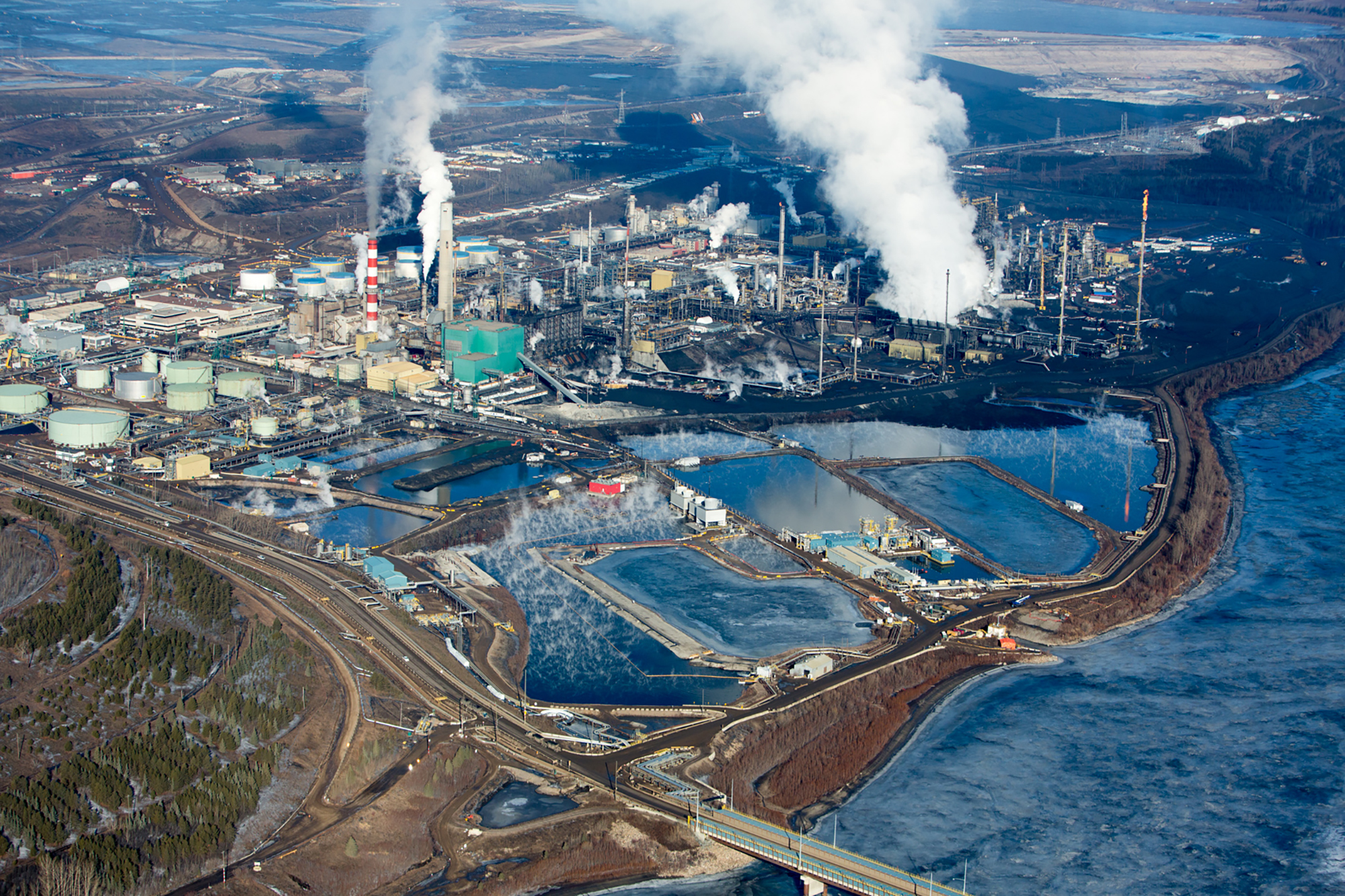
Tailings ponds are often very close to the Athabasca River. The Commission for Environmental Cooperation report includes information from Syncrude that estimates approximately 785 million litres of tailings fluid “migrated” past collection ditches in 2017. Photo: Alex MacLean
According to the report, information from Syncrude and Suncor showed “consistent evidence of seepage of [tailings fluids] from tailings ponds into groundwater at certain monitoring wells that are close in proximity to surface water, including tributaries to the Athabasca River.”
Specifically, the report notes that Syncrude’s own calculations show approximately 785 million litres of tailings fluid had “migrated” past the collection ditches in 2017. That’s equivalent to enough drinking water for a million people for a full year.
Will Gibson, spokesperson for Syncrude, told The Narwhal in an interview that the company has hundreds of groundwater monitoring wells and is “committed to improving our environmental performance.”
“Based on a comprehensive monitoring program, we’re confident that we’re not having an adverse impact,” he said.
Suncor pointed The Narwhal to a prepared statement, which noted “as a whole, the industry spends approximately $50 million each year on monitoring in the region, with an additional $130 million per year on site-specific monitoring. To date, these programs have not indicated an adverse impact to the Athabasca River from the oilsands industry.”
At issue, in part, is whether there is enough evidence leaked tailings fluid is causing “adverse impacts” once it gets into the groundwater. But more on that later.
The possibility that tailings ponds leak, according to the report, “has been raised on numerous occasions, over many years, by federal authorities and has at times been predicted by industry as well.”
The report found indications industry and government have known tailings ponds leak since the early days of oilsands development in the Athabasca region, citing a study dating back to 1973.
The bulk of the factual record, and the complaint that initiated it, revolves around Canada’s Fisheries Act, specifically the subsections that are known as the “pollution-prevention provisions.”
In Canada, water law is generally within the purview of the provincial governments, unless the water contains fish or is navigable — then jurisdiction overlaps with the federal government.
In this case, the Athabasca River does contain fish, as do its tributaries.
Those pollution-prevention provisions prohibit the “unauthorized deposit of deleterious substances in waters frequented by fish.”
In other words, no dumping things like tailings fluid into the Athabasca River.
The way companies operate tailings ponds now is “on its face unlawful,” Martin Olszynski, an associate professor of law at the University of Calgary and a consultant on the factual record, told The Narwhal.
“Because these tailings ponds may be leaching, they are essentially a contravention” of the Fisheries Act, he said.
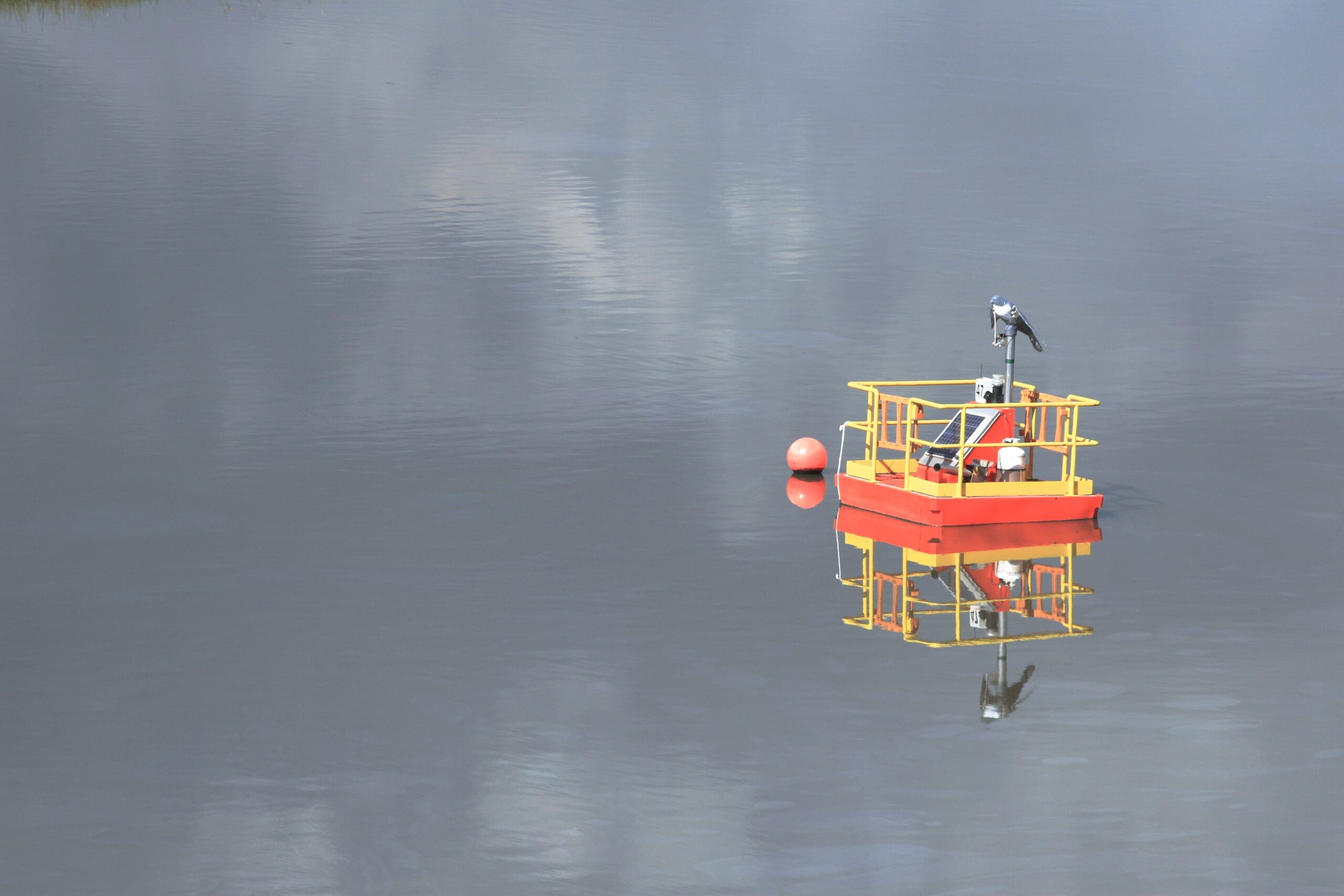
Federal law prohibits companies from allowing tailings fluid to get into the Athabasca River and its tributaries because they contain fish. However, federal regulations could be developed to stipulate conditions for the release of tailings fluid in such waters. Photo: Julia Kilpatrick / Pembina Institute
Importantly, Olszynski noted, there does not need to be evidence that the leaks are causing significant adverse effects — only that they could.
“The absence of proof is not proof of absence,” Olszynski added.
There’s a catch though — those leaks or dumps can be authorized. The federal government would just need to write up some regulations that permitted it.
The federal government could adopt regulations to specify where, when, under what conditions and in what amounts tailings fluids are released, according to the Fisheries Act.
But it hasn’t. Or, at least, not yet.
The Government of Canada’s response to the commission’s findings is part of the factual record. While the government noted “there is potential for tailings water … to interact with the Athabasca watershed,” it stopped short of acknowledging evidence of tailings ending up in the water system.
The government did acknowledge that its inspectors had found contaminants that could be indicative of leaks. These inspections are done on an as-needed basis, and may be done proactively.
According to the government’s response, federal inspectors visited seven tailings ponds between 2009 and 2014.
At five of them, elevated levels of some contaminants were identified: naphthenic acids near Syncrude tailings ponds; ammonia near a CNRL tailings pond; arsenic, ammonium, zinc, chloride, boron and vanadium near a Suncor tailings pond — and so on.
Those same inspectors “determined that they did not have reasonable grounds to believe that there were violations,” according to the government’s response.
“When deleterious substances were found in groundwater samples,” the government concluded, “enforcement officers could not determine if they came from natural or anthropogenic” sources.
Because the inspectors couldn’t be sure where the fluids came from, they couldn’t establish who allowed them to get there.
When it comes to the Fisheries Act, federal inspectors have a few options for enforcement, but they mostly revolve around requiring companies to provide data and completing investigations.
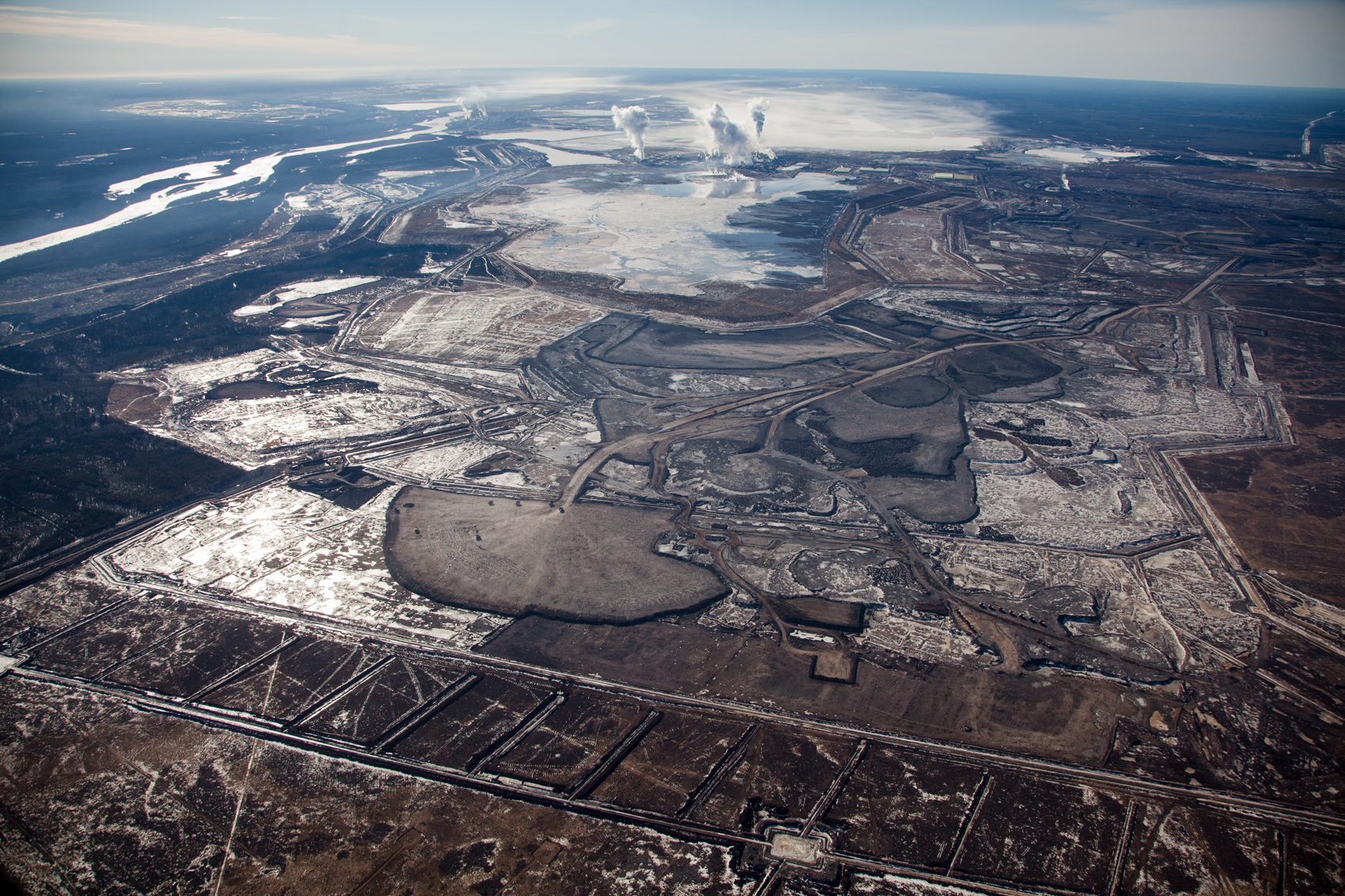
Federal inspectors visited Syncrude’s facility at Mildred Lake in 2012 and found elevated levels of naphthenic acids in Beaver Creek, near the facility’s tailings ponds. No further action was taken because the government asserted there was no way to tell whether “naphthenic acids were anthropogenic or naturally occurring.” Photo: Alex MacLean
The most significant action would be to recommend charges be laid against a company — in other words, recommending the government takes a company to court.
But enforcement officers have been reluctant to go this route because the standard to prove guilt is so high.
The main reason? The same debate over whether it was “anthropogenic or naturally occurring.”
As a result, there’s never been a prosecution regarding leaking tailings ponds.
But Olszynski, the law professor at the University of Calgary, doesn’t agree with that interpretation of the law. He argues that the Fisheries Act makes it illegal to put tailings fluid in a spot where it may enter the water.
To be an offence, Olszynski said, there is no need to prove the tailings ponds are actually leaking, but that they might.
Dale Marshall, national climate director of Environmental Defence, isn’t impressed with the government’s stance.
“It sounds to me like excuse making, to be honest,” he told The Narwhal. “This is a decades-long problem and industry and government have known about it.”
“This is the challenge,” Jonathan Martin, a professor of toxicological and environmental chemistry at Stockholm University as well as an adjunct professor at the University of Alberta, said at a recent webinar.
“There is naturally bitumen-impacted water in the region,” he said, referring to water that is contaminated with oil that naturally rises to the surface and gets into rivers and streams.
But, he added, there are a number of tools researchers can use to “fingerprint” what’s in the water. Taken together, he said, the tools allow scientists to get closer to pinpointing the source.
“The overall body of evidence would be strong enough” to determine whether something is naturally occurring or not, he added.
“Tailings ponds have contaminated groundwater,” said Martin, who was also an expert contributor to the factual record. “There is no doubt in my mind.”
The federal government noted in its response that it believes it has “made promising advances on discovering the compositions of [tailings fluid] and natural bitumen-influenced groundwater,” in recent years.
And it’s optimistic, noting “scientific advances from the past three years are expected to lead to an improved ability for [Environment and Climate Change Canada] to enforce the pollution-prevention provisions of the act in the coming years.”
In a statement, Wilkinson said “improvements in science and technology are the only way we can gather the evidence needed to enforce our environmental laws.”
“If technology needs to be developed, let’s develop it,” he added.
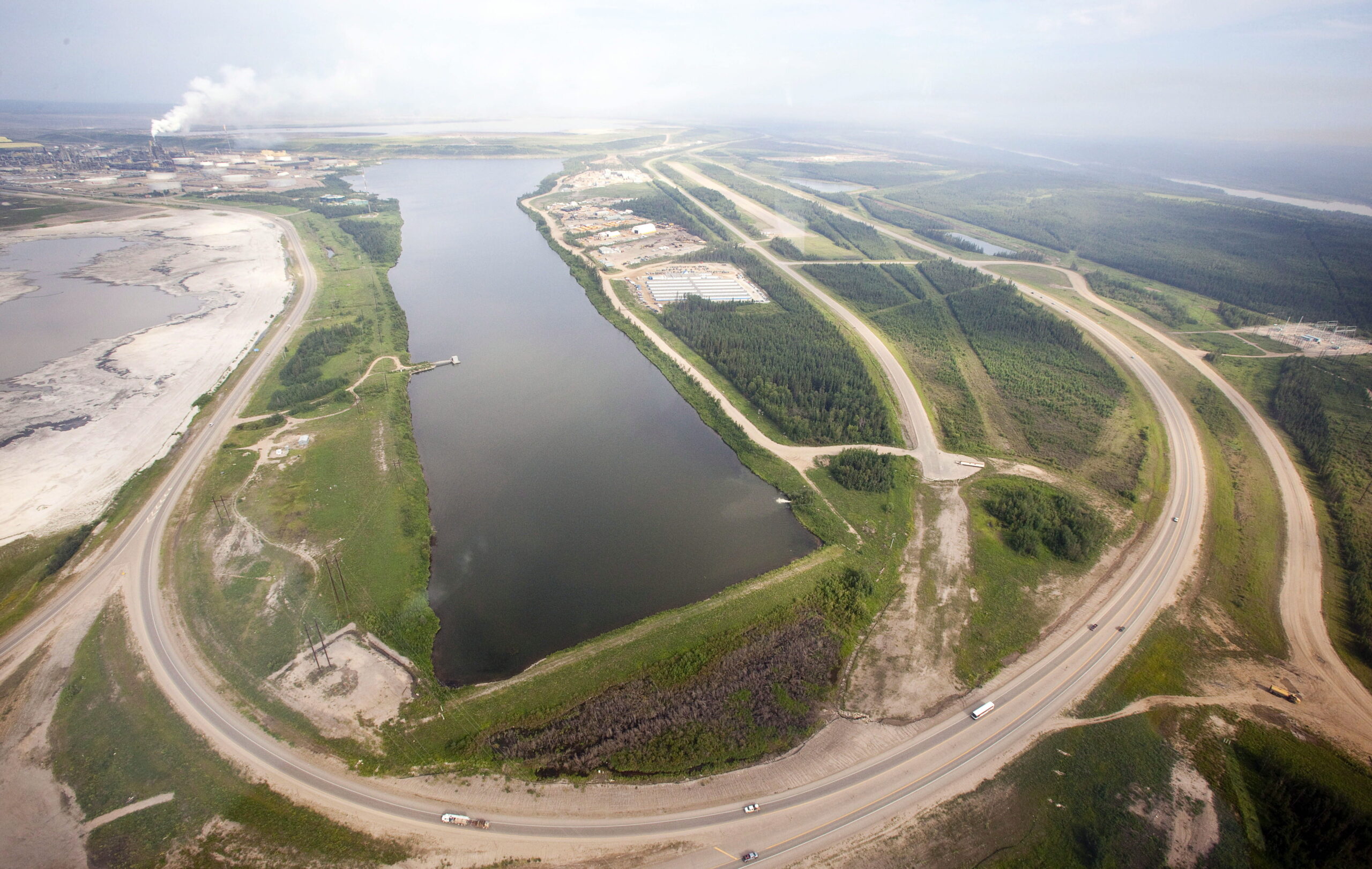
A highway loops around a tailings pond at a Syncrude facility in Alberta’s oilsands. The federal government has never brought charges against an oilsands company for leaking tailings fluid, in part because of a debate over whether contaminants detected in nearby groundwater are anthropogenic or naturally occurring. Photo: Jeff McIntosh / The Canadian Press
The Narwhal asked Syncrude if it is working on developing any technologies to differentiate between naturally occurring and anthropogenic contaminants. Gibson, the spokesperson for Syncrude, was not able to point to any specific research, noting it is very difficult to sort out what is naturally occuring.
“It would probably be very educational for people to go on the [Athabasca] River and see that, because then maybe they’d understand, you know, why it’s difficult to distinguish between what is naturally occurring and what is not,” he said.
But, he added, “that doesn’t absolve us from our commitment to responsibly develop the oilsands.”
Gibson told The Narwhal the company has “lots of projects going,” noting more than half of Syncrude’s annual research and development budget is dedicated to environmental performance.
In the meantime, there are no parameters guiding the release of oilsands tailings fluids into the fish-bearing waters.
That brings us back to the regulations.
Regulations for the release of tailings fluids into waterways have been a long time coming.
Moira Kelly, press secretary for Wilkinson, told The Narwhal by email that “the department is currently working on regulations under the Fisheries Act that would set effluent quality standards for oilsands mines under conditions that are protective of the environment.”
Developing the regulations involves substantial engagement and will take “several years,” she added.
Suncor’s prepared statement noted it is supportive of new regulations, a sentiment echoed by Syncrude.
“We have supported the federal and provincial work underway for more than a decade to establish a fully integrated water management approach that encompasses the principles of reduce, recycle and release,” Suncor’s statement said.
The Alberta government sets regulations for the treatment of tailings fluids — different from the release of those fluids. (Alberta Environment and Parks did not respond to The Narwhal’s request for an interview.)
The Alberta Energy Regulator is responsible for overseeing oilsands development in the province, including tailings ponds.
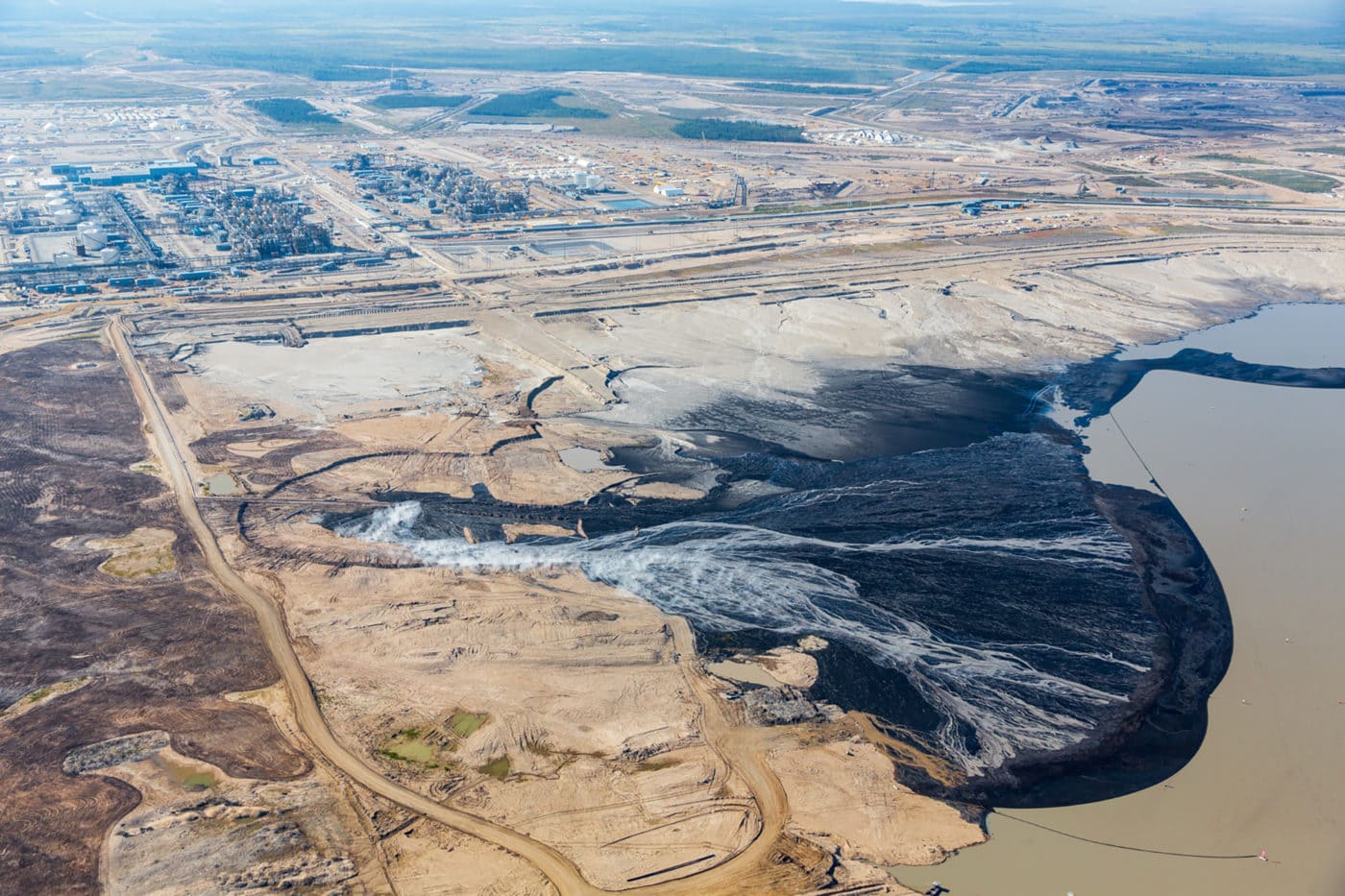
The Alberta government regulates the treatment of tailings fluids but not the release of those fluids. “There’s a lot of finger pointing,” Melody Lepine of Mikisew First Nation said of governments’ response to regulating and cleaning up the tailings ponds. Photo: Alex MacLean
The regulator provided a lengthy response to The Narwhal’s questions in which it said tailings fluids could seep into nearby groundwater but it doesn’t have evidence that contaminated groundwater has reached the Athabasca River.
The regulator pointed The Narwhal to the federal and provincial governments for other questions.
“There’s a lot of finger pointing,” Lepine said when it comes to jurisdictional overlap. “It’s a lot of back and forth, and they just can never agree. And so when they don’t agree or find a way to resolve the problem, the problem gets ignored. “
The Alberta Energy Regulator tracks the estimated cost of reclaiming oilsands mines, based on figures submitted by industry. Its most recent estimate of total liabilities associated with oilsands mines is $30.81 billion.
That price tag is largely related to cleaning up the tailings ponds, according to experts.
Several experts The Narwhal spoke with were overwhelmingly in favour of governments taking more aggressive action.
Many would like to see governments requiring companies to ensure the tailings ponds don’t leak.
“The federal government should be working with First Nations to come up with full containment solutions,” Marshall of Environmental Defence said in the webinar.
Some of the solutions could be expensive, but Marshall is adamant companies need to be held financially responsible — and they can afford it.
“The oil and gas industry has obviously taken a hit over the last year … But oilsands companies themselves are still making billions of dollars in profit,” Marshall told The Narwhal.
Others are pushing for the federal government to develop regulations and prosecute companies that aren’t in compliance.
Asterisk of Keepers of the Athabasca thinks drastic action is needed. “The federal government needs to be sued,” she said. “They’ve known all this time.”
For others, there is a need for transparent monitoring of tailings, along with significant investment into research that seeks to improve the situation.
“More monitoring is really not the only answer,” Lepine said. “More monitoring is great … but is this information really going to result in any … action and change?”
Updated Dec. 15, 2020, at 6:30 a.m. PST: a previous version of this story said Melody Lepine lives in Fort Chipewyan, Alta. While that is her home community, she now lives in Fort McMurray.
Enbridge Gas will face Waterloo Region in a hearing before the Ontario Energy Board to renew an agreement that would allow the company to continue...
Continue reading
When maps showing areas most likely to flood are outdated, it puts people and property...

We’re suing the RCMP for arresting a journalist on assignment for The Narwhal. It’s an...

As glaciers in Western Canada retreat at an alarming rate, guides on the frontlines are...